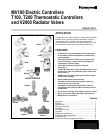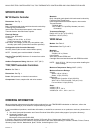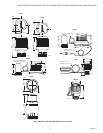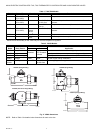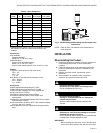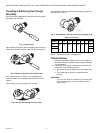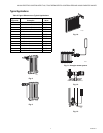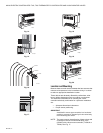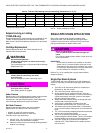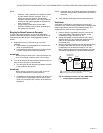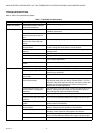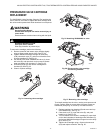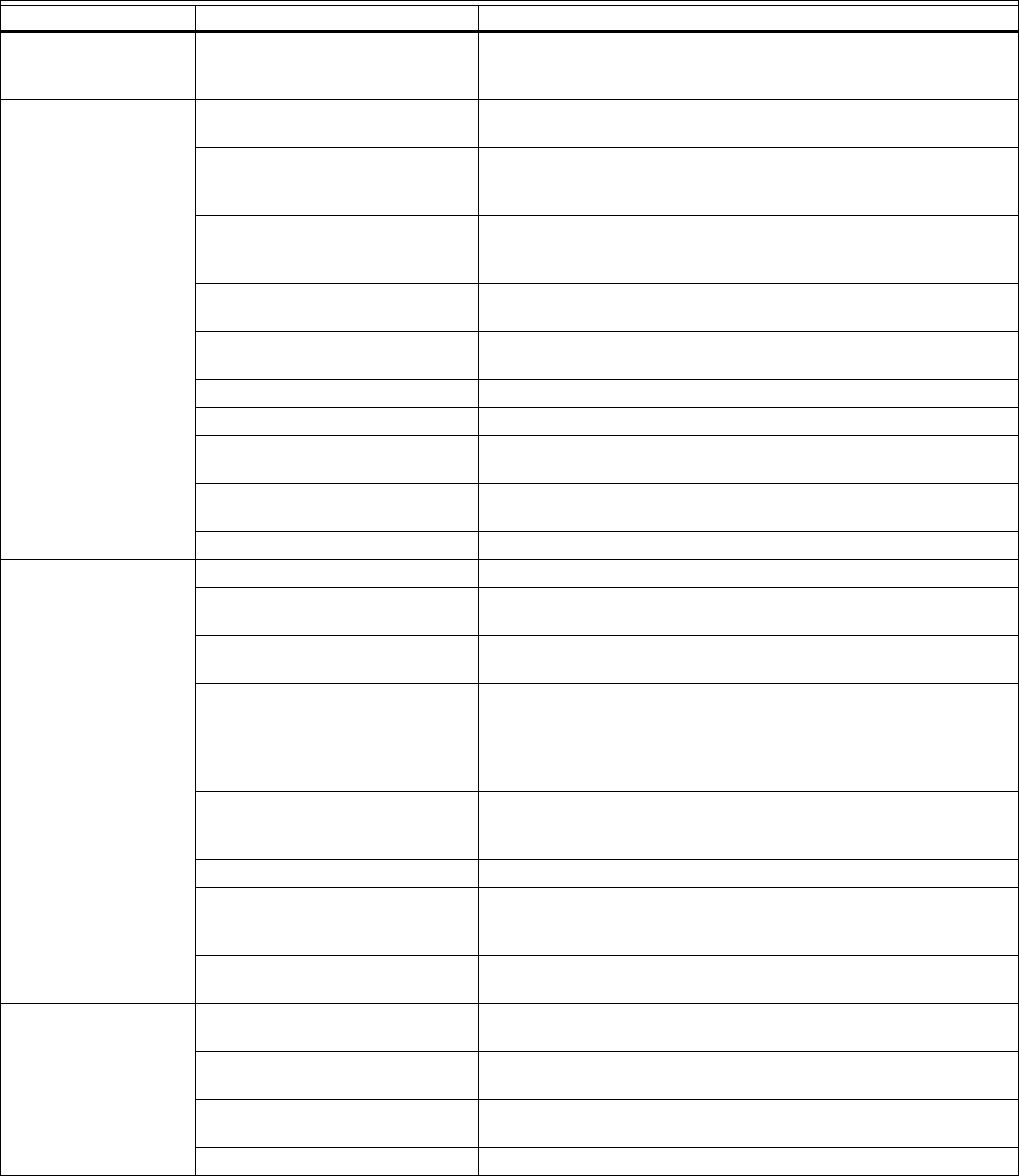
MV100 ELECTRIC CONTROLLERS T100, T200 THERMOSTATIC CONTROLLERS AND V2000 RADIATOR VALVES
62-3048—2 12
TROUBLESHOOTING
Refer to Table 6 for troubleshooting details.
Table 7. T100/V2000 Troubleshooting.
Symptom Possible Cause Solution
Not all sections of the
radiator are heating.
Many radiators are oversized and
not all sections heat to maintain
the desired temperature.
System is operating properly.
Underheating Sensor in the wrong location. Change the sensor location or change the control type. See
Installation Instructions.
T100A,M Controller mounted in a
vertical position above the hot
pipe.
Mount the T100A,M horizontally, or switch controller to a T100F.
Excess capillary tubing coiled
above or too close to the heat
source.
Coil excess capillary tubing below or away from the heat source.
Flow through the valve is in the
wrong direction.
Check the arrow on the valve body. It should be in the direction of
the flow. Change the valve direction or flow direction.
Inadequate system temperature or
pressure.
Check boiler operating and limiting controls, circulating pump, and
isolating valves.
Defective steam traps. Repair or replace the traps.
Airlock in the hot water system. Fully open the valve to allow air to pass. Install vents.
Scale or debris blocks flow. Flush the system. Do not use oil-based additives. Clean strainer
insert in steam applications.
Heating cabinet dampers are
closed.
Open or remove the dampers.
Single-pipe: Blocked vent. Remove and inspect vent. Replace if necessary.
Overheating Sensor in the wrong location. Change sensor location or change control type.
Control not properly installed. Check for bosses and grooves, reset actuator on valve and tighten
knurled ring to valve body.
Capillary tube broken, kinked or
bent sharply.
Replace control.
Dirt or scale under the seat
prevents tight shutoff.
Remove the control from the valve body, allowing valve to open
fully and flush away scale and debris. Reinstall control. Turn fully
clockwise. If the valve does not close fully, remove the control and
cartridge (see Cartridge Replacement section). Always use a
strainer insert in steam applications.
Flow through the valve is in the
wrong direction, damaging the
valve seat.
Check the arrow on the valve body. It should correspond to the flow
direction. Change the valve direction or flow direction. Remove
valve cartridge and inspect seat disk for damage.
Defective steam traps. Repair or replace traps.
Excessive differential pressure
forces the valve open (hot water
systems).
Install differential pressure regulator (D146A) to maintain less than
15 psi (103 kPa) differential between the supply and return pipes.
Single-pipe: Insufficient air in
system.
Check boiler cycling and system vacuum breakers. Repair or
replace breakers as necessary.
Chattering or knocking. Flow through the valve in the
wrong direction.
Check the arrow on the valve body. It should correspond to the flow
direction. Change the valve direction or flow direction.
Vacuum in the system. Steam—check traps and vents.
Hot water—check expansion tank operation and location.
Excessive differential pressure. Install differential pressure regulator (D146A) to maintain less than
15 psi (103 kPa) differential between the supply and return pipes.
Bent piping. Ensure adequate space for piping.



